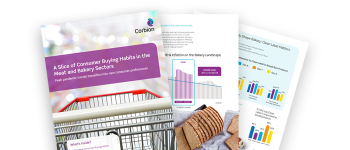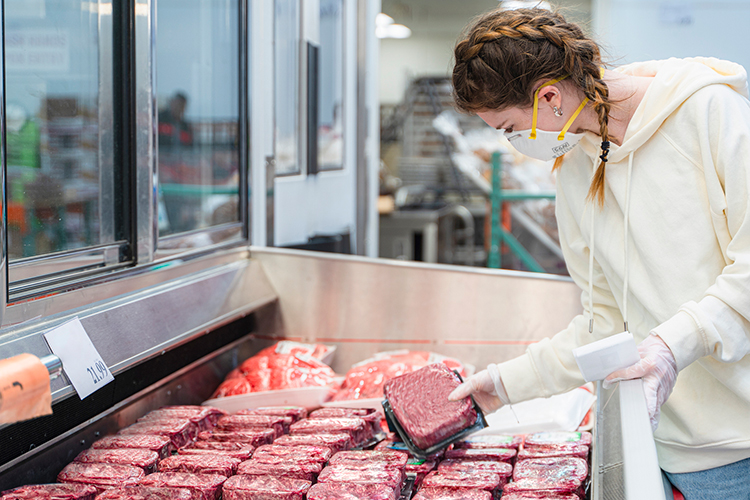Shifting Channels, Changing Consumer Habits and Expanded Definitions Spark New Opportunities for Meat and Poultry
Leading up to 2020, there were a lot of predictions about consumers’ buying and eating habits in the new decade. Fast forward to today, after the global pandemic upended lives all over the world. COVID-19 didn’t just disrupt the marketplace – it reshaped it.
This reshaped market is notable for consumer behaviors that are fueling current trends and for the redefinition of attributes like quality, value and convenience. As the crisis abates with the loosening of restrictions and an opening up to a new normal, food processors and producers can keep tabs on major shifts while tapping into new opportunities for growth as they provide products that meet consumers’ evolving needs and demands.
One result of the global health crisis is the acceleration of the move to an omnichannel marketplace. Because consumers could not dine out in restaurants, foodservice operators shifted to carry-out, delivery and, in some cases, turning their businesses into small food markets and boutiques with online shopping and ordering. At the same time, the retail sector flourished, with consumers cooking at home more and buying groceries during shorter trips to the brick-and-mortar store and more frequent e-commerce buying for curbside pickup or home delivery.
The blurring of lines between retail and foodservice – and between in-store and online buying that started before the pandemic continues with new twists. And with more choices, consumers have higher expectations for quality and variety.
In addition to channel shifting, consumers are changing their behaviors in other ways. Although they may not be posting photos of theme dinners and homemade bread anymore, people are still frequently cooking at home. For many, what started as a necessity has led to a new interest, passion and habit.
For Americans, many of those meals are meat-centric. Sales of fresh meat increased 34% during the pandemic and nearly half of shoppers say they bought more meat to support more at-home meal occasions.1
Depending on household size, cooking more often entails cooking for more people. Larger “family packages” of products like meat and poultry accommodated the need to feed families.
More than a year into these changed habits, consumers who are buying ingredients for and preparing meals at home are seeking some help. Such help can be in the form of recipes and ideas as well as value-added and heat-and-eat products that allow them to prepare meals faster, easier and with more flavor. Case-ready, value-added items sold briskly in retail settings during the pandemic and opened up a new consumer base for such items.
Variety is key to many of these meals, as people mix up what they are eating. In addition to traditional center-of the plate proteins, consumers are occasionally downsizing proteins in dishes like salads and bowls, seeking out plant-based proteins and meat-plant blends and adding ready meals to their roster.
It may not approach the 50-50 mark as before the pandemic, but soon there will be more of a balance between eating at home and eating out, once restaurants open at full capacity. When dining away from home, consumers are expected to seek fun, adventurous flavors that reflect their more buoyant mood.
|
New Habits, New Needs
Beyond changed buying and eating behaviors, consumers have redefined some aspects of quality, convenience and value in the past year or so.
The notion of quality, for example, still implies a satisfying eating experience. In addition to taste, quality encompasses safety, with foods that are free from potentially harmful pathogens. Increasingly, quality also means fresh, premium foods made with quality ingredients. Natural ingredients fall under the quality umbrella, particularly in an era when health and wellness are top of mind.
Likewise, the meaning of convenience has shifted. The on-the-go lifestyle common before the pandemic is less relevant now, even as activities ramp back up. Instead, ease of use is equated with convenience, with products that can be made quickly and easily and have a longer shelf life.
Value has also taken on new dimensions in the wake of the significant changes wrought by the circumstances of the past year. Price is still a basic part of value, especially among those hard-hit by job losses and job insecurity. The popularity of value-added meats also underscores the different interpretations of value, in the saving of time and the need to purchase other ingredients.
As definitions of quality, convenience and value widen, versatile food ingredients and food technologies allow processors to deliver on the many facets of those demands. Ferments that prevent microbial growth, extend shelf life and enhance flavor are an example.
Time for Tech
Finally, the role of technology has been brought more to the forefront. Consumers ordered take-out and take-home meals from restaurants and used devices to buy groceries much more often because they largely had to do so. Going forward, those in the food chain, from producers and processors to retailers and foodservice operators, will deploy technologies to offer consumer solutions and information on what they are eating, including how and with what ingredients meat and poultry products are made.
|
Footnote: 1. Power of Meat, Midyear 2020 edition, published by FMI, The Food Industry Association Foundation for Meat & Poultry Research & Education


